-
 © LAT Photographic
© LAT Photographic -
© LAT Photographic
-
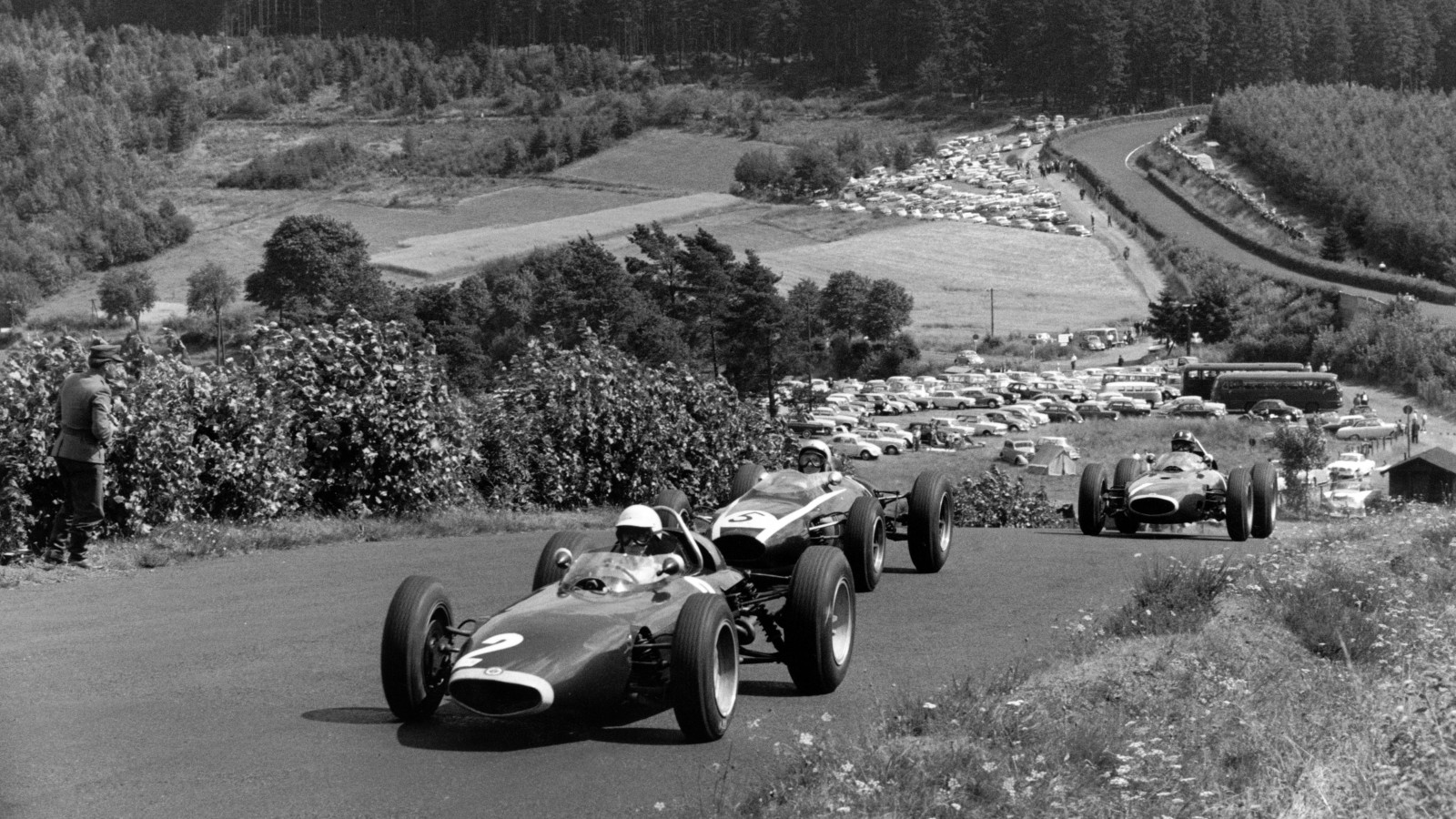 © LAT Photographic
© LAT Photographic -
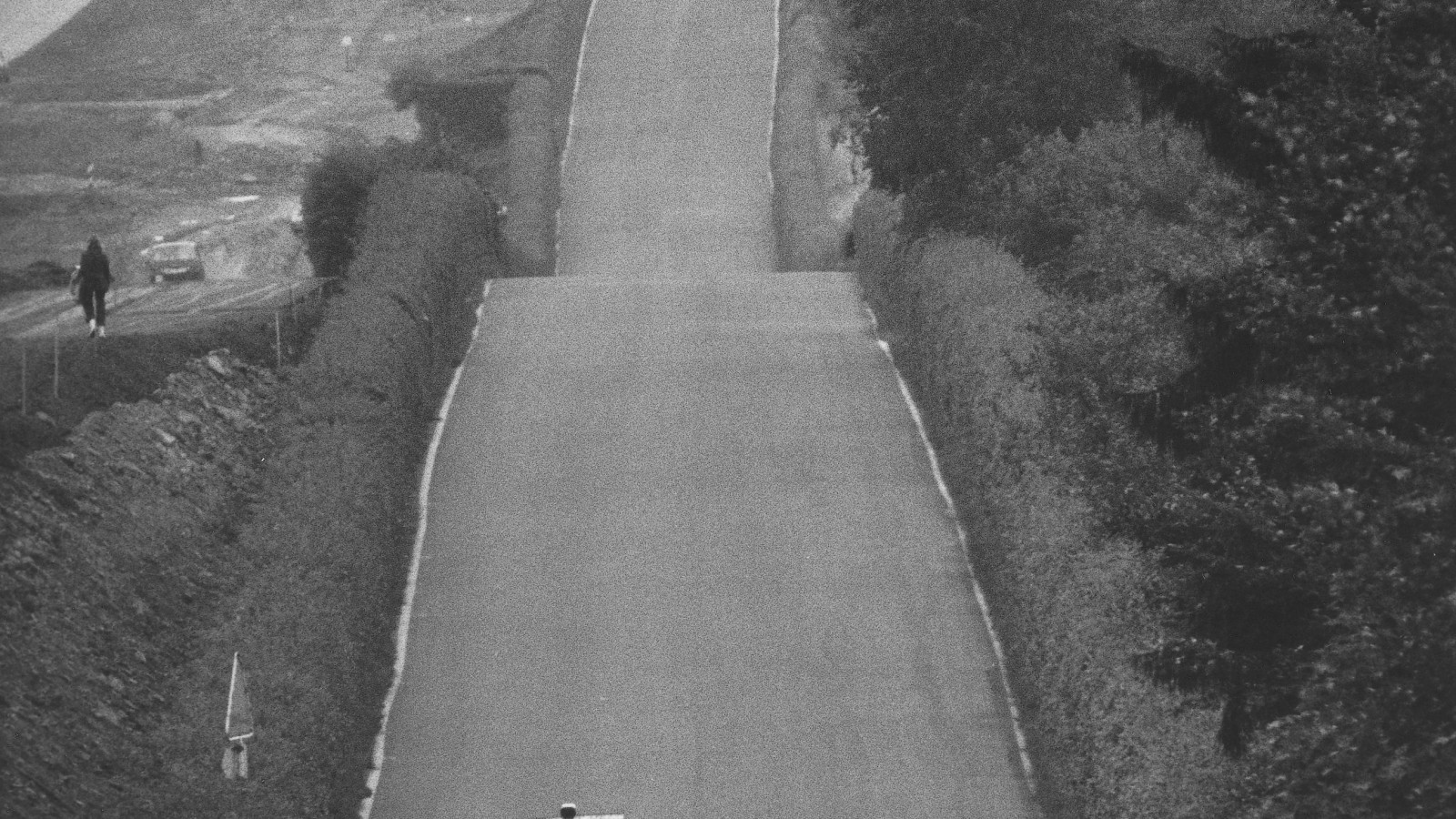 © LAT Photographic
© LAT Photographic -
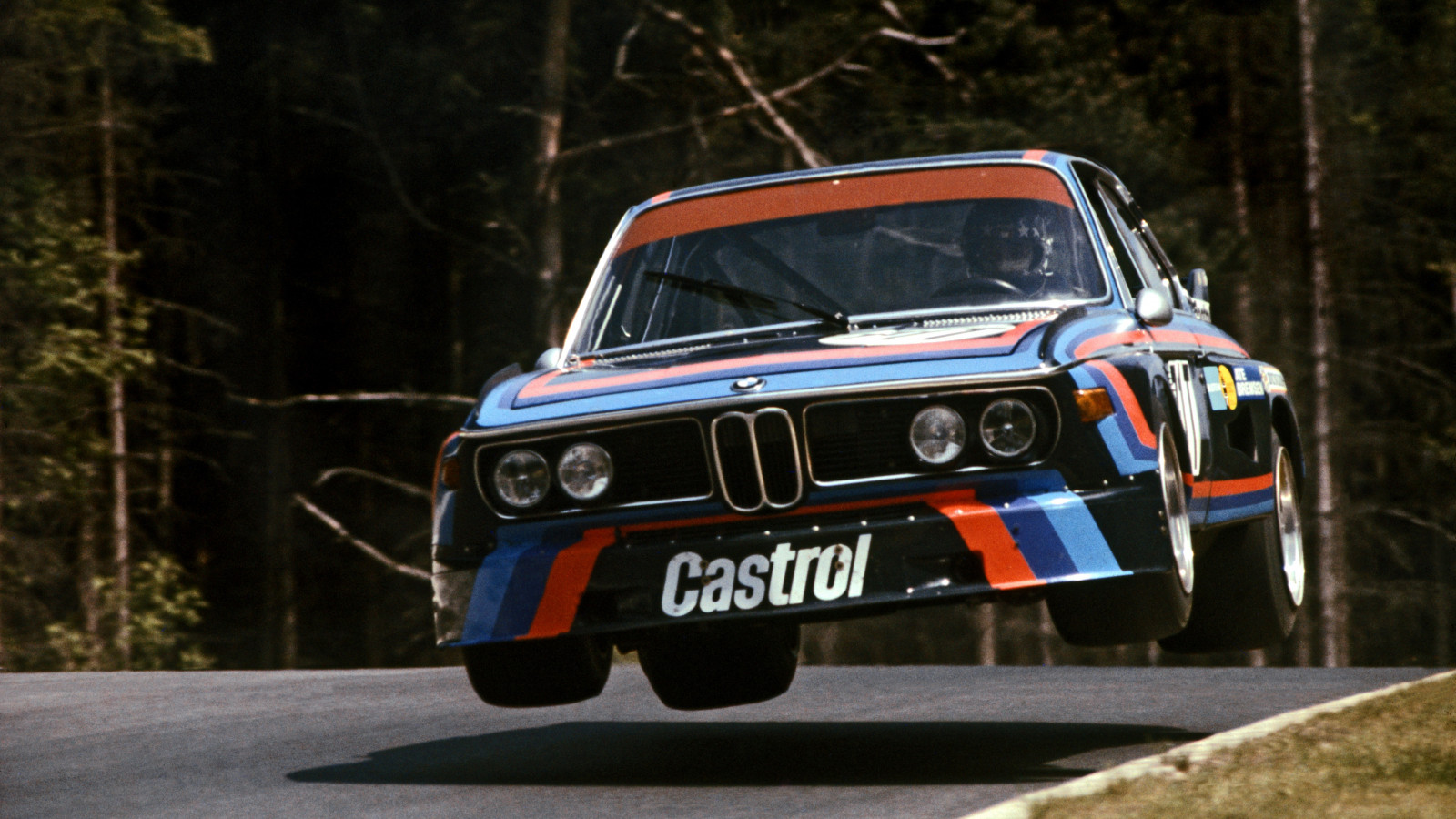 © LAT Photographic
© LAT Photographic -
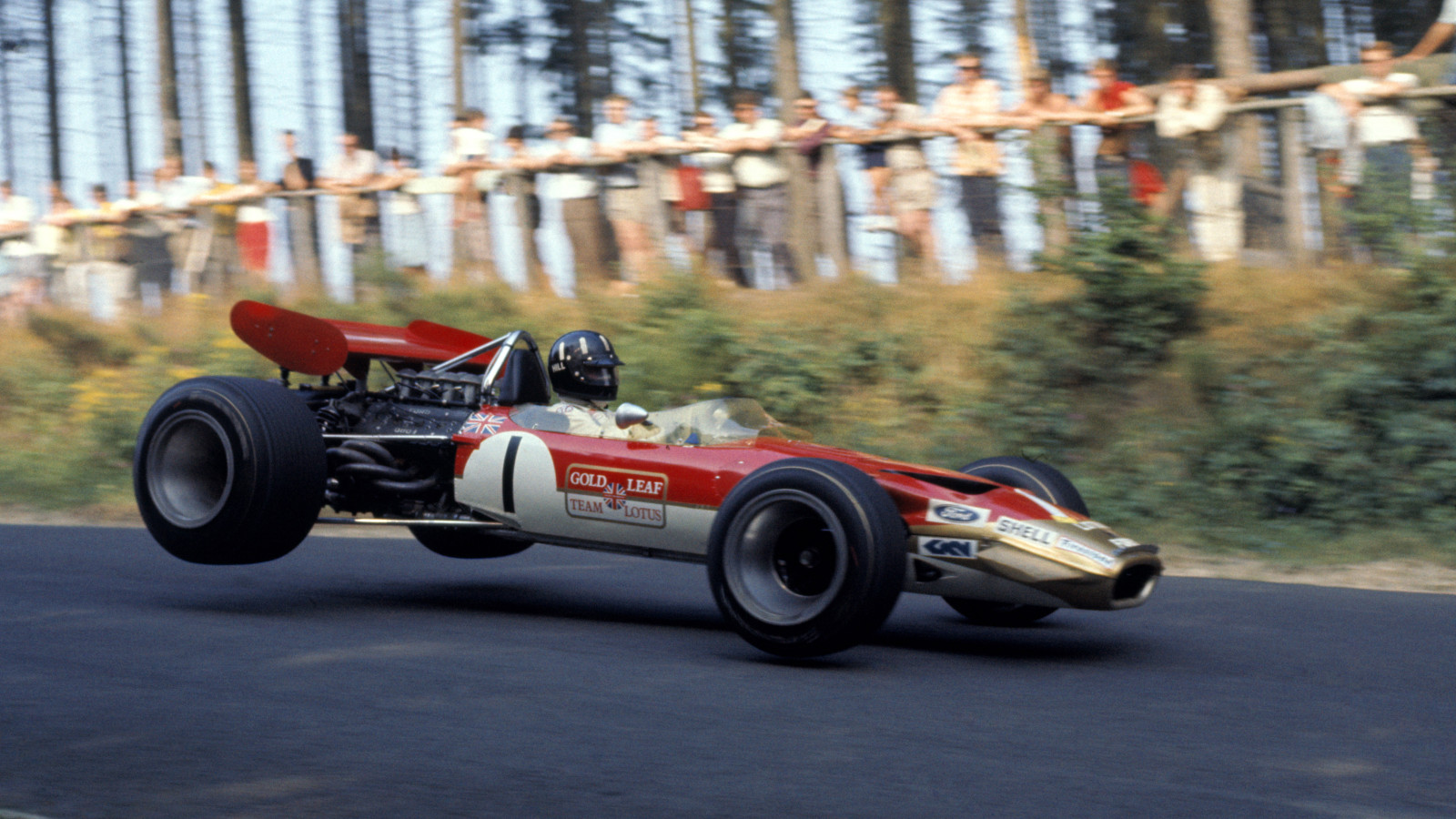 © LAT Photographic
© LAT Photographic -
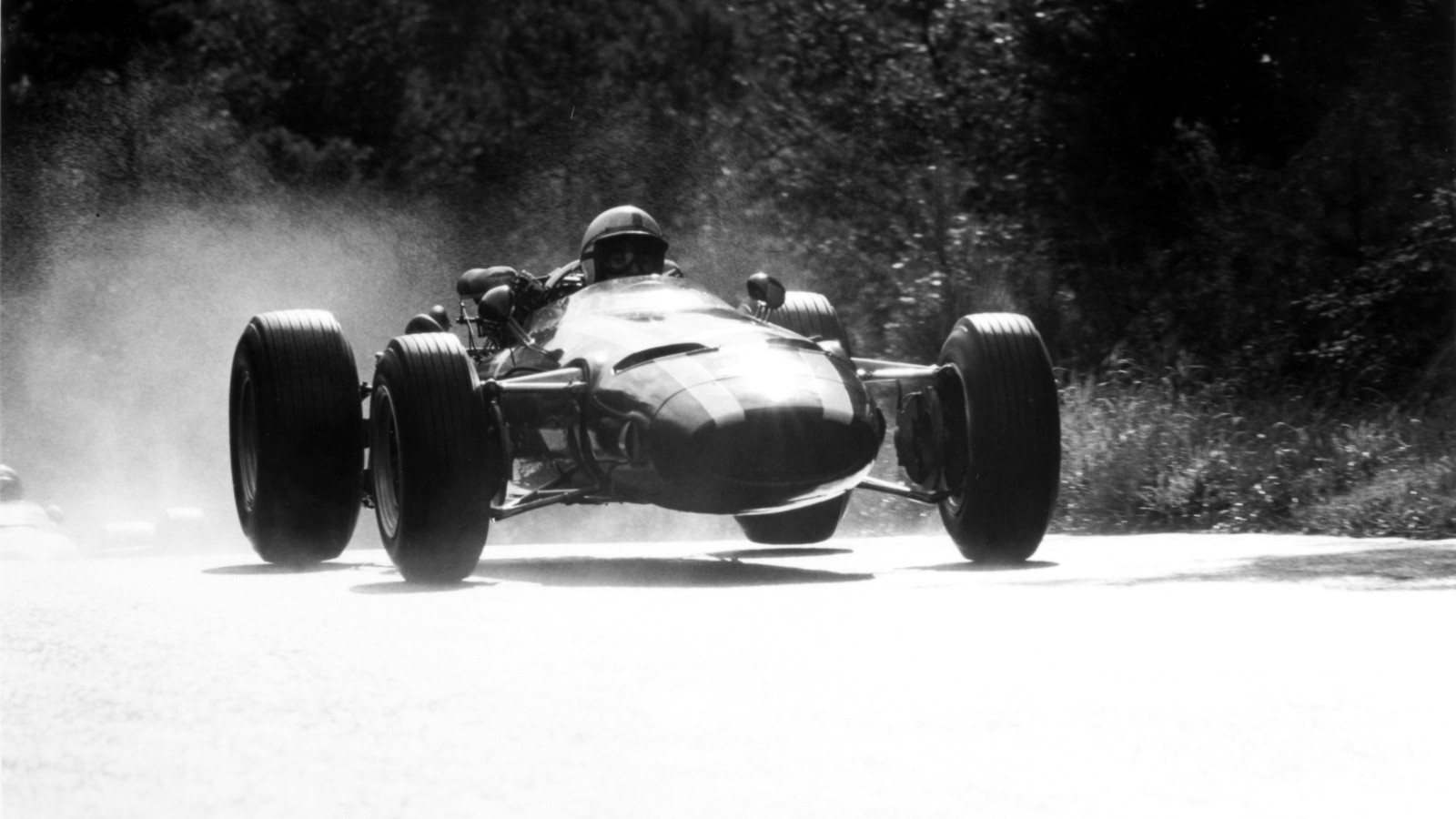 © LAT Photographic
© LAT Photographic -
© LAT Photographic
-
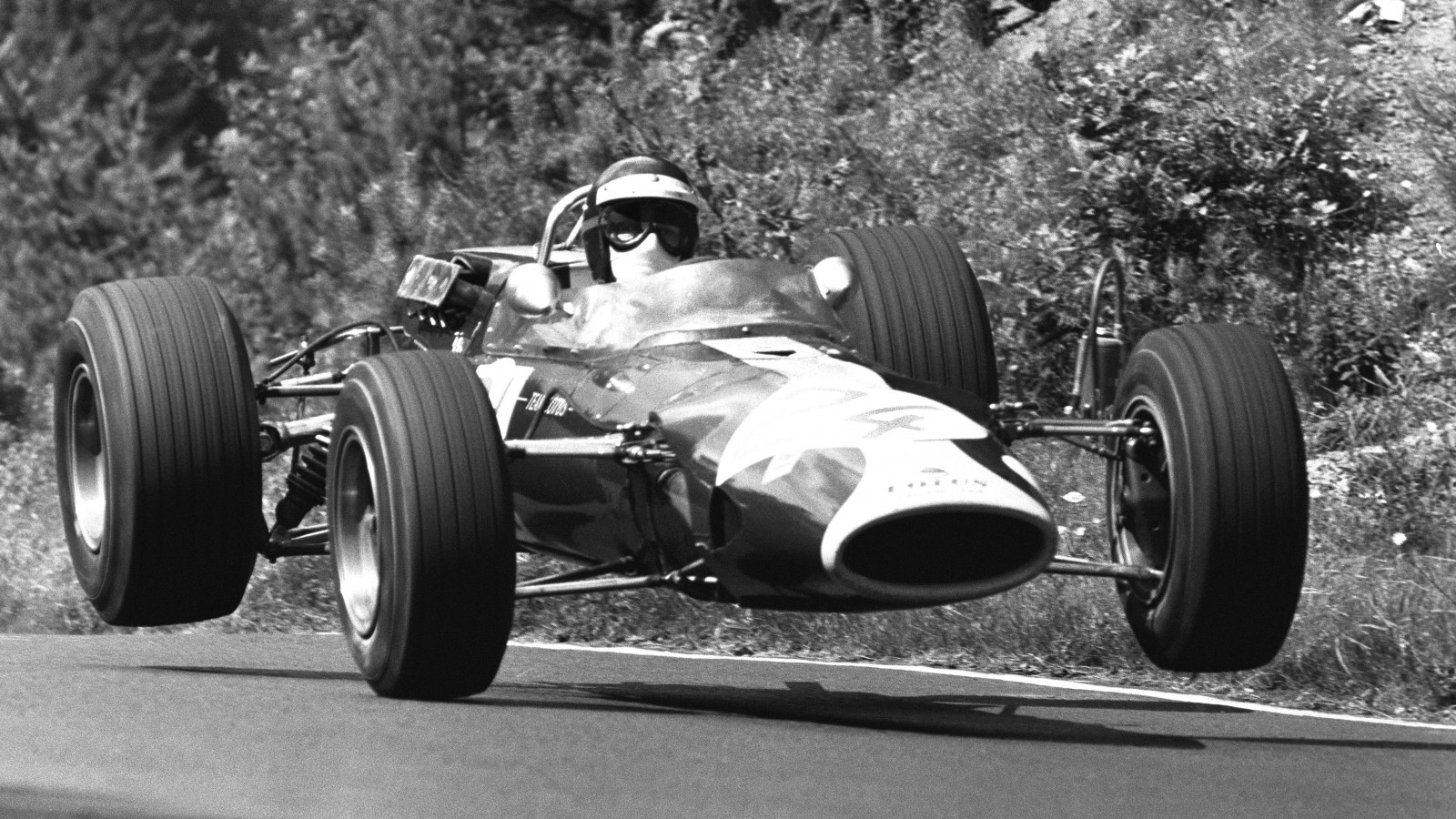 © LAT Photographic
© LAT Photographic -
© LAT Photographic
-
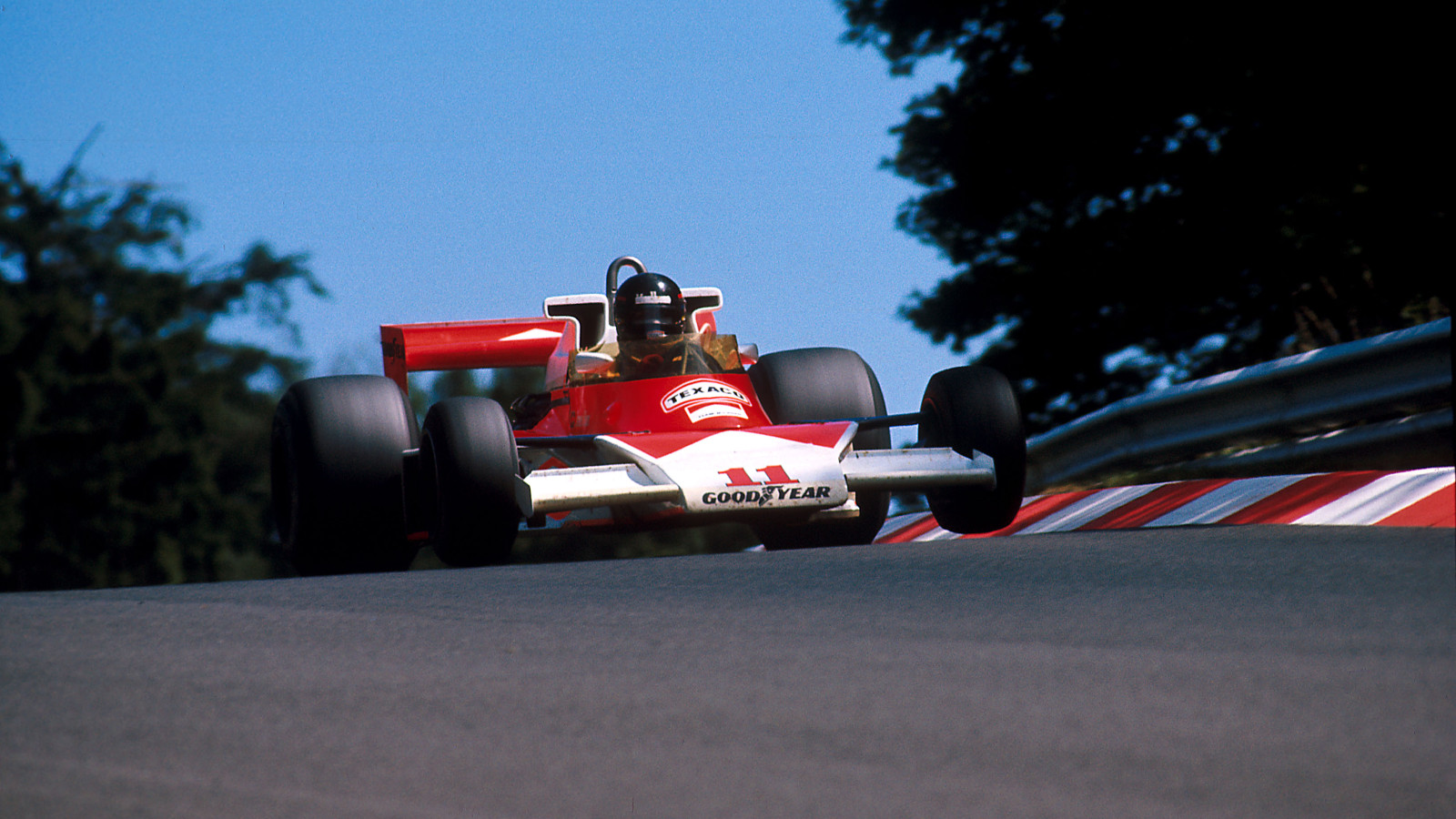 © LAT Photographic
© LAT Photographic -
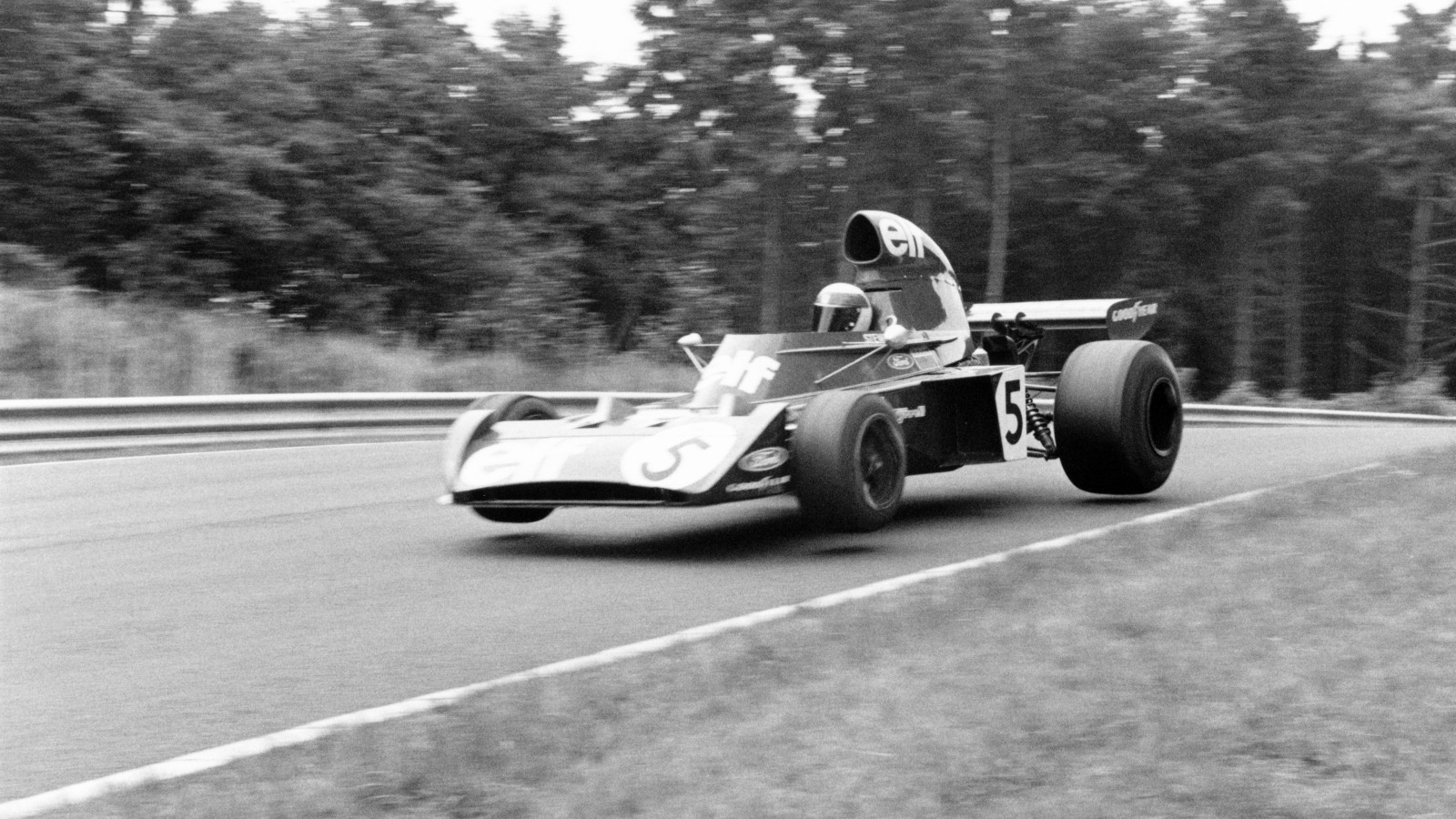 © LAT Photographic
© LAT Photographic -
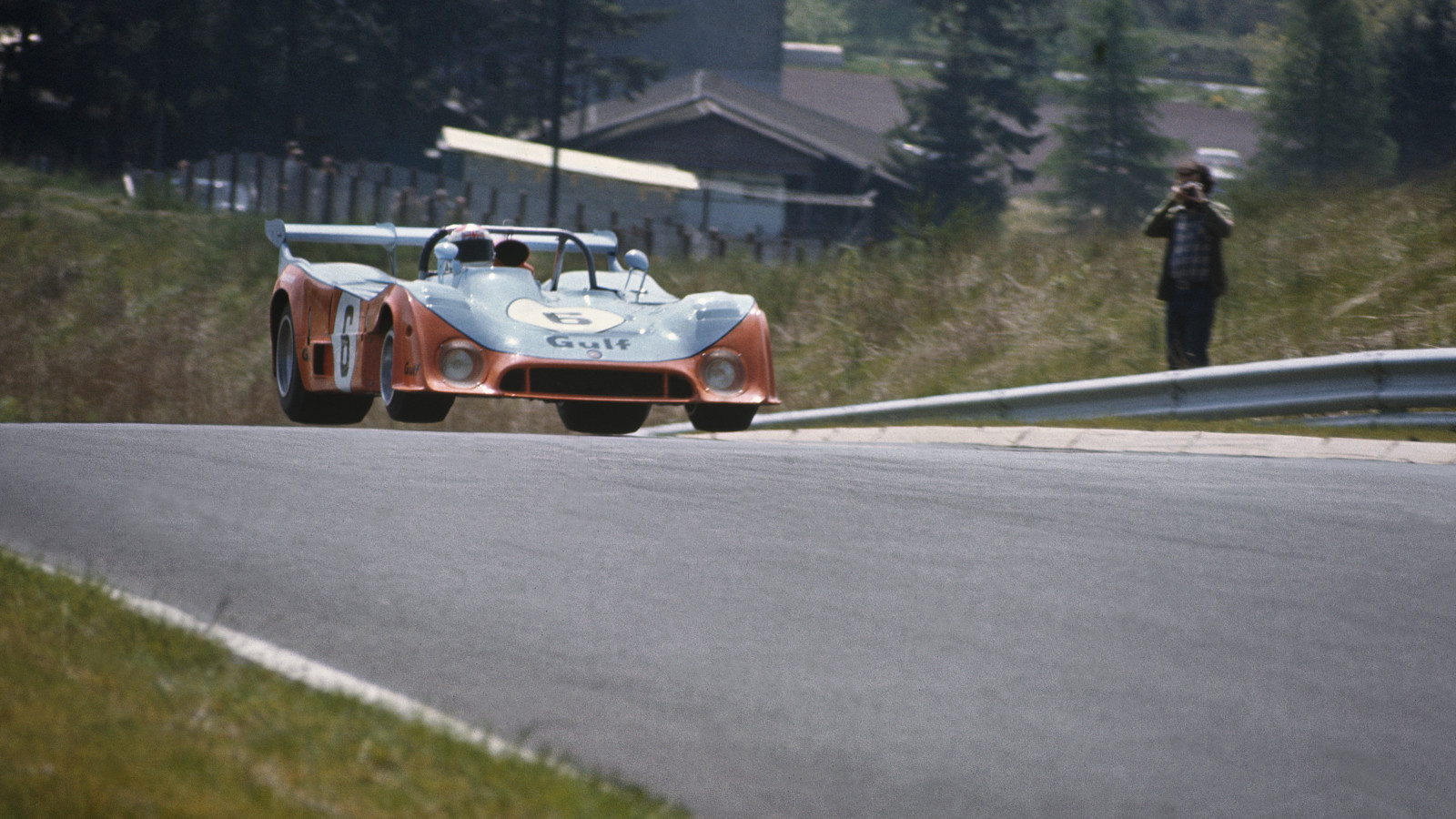 © LAT Photographic
© LAT Photographic
-
Taking flight
Few historic race circuits stir the emotions in quite the same way as the Nürburgring, and few offered quite the same challenge. While the average speeds were relatively low compared to the likes of Spa or Monza, the 14-mile Nordschleife encompassed endless crests, brows, jumps and kinks – all of which had to be learned if you were to be truly competitive around there.
Add the rudimentary, or nonexistent, safety precautions and the difficulties of marshalling such a long circuit, and you can see why its time as a Grand Prix circuit ended in 1976. With safety an increasing concern, the circuit had temporarily been dropped off the F1 schedule in 1970 while changes were made – the German Grand Prix relocating to soulless Hockenheim. The alterations to the Nordschleife involved removing trees to open up sightlines, installing Armco barriers and easing some of the more severe jumps – and it’s the last of those that produced our wonderful selection of ‘airborne’ photographs, in F1, Touring Cars and sports car alike.
From Brunnchen to Pflanzgarten and Flugplatz, the ‘Ring featured a number of areas where the cars would take off. As proven here, some survived the facelift, many didn't, but there are plenty of people who would still go along with British F1 ace Tony Brise, who called the circuit “God’s gift to racing drivers”.
In this picture, Ferrari ace Clay Regazzoni takes flight at the Nurburgring while steering his 312B3 to victory in the 1974 German Grand Prix. The Swiss driver led for every lap of the race – it was his second outright Formula One Grand Prix win since his debut victory at the 1970 Italian Grand Prix.
-
Hatzenbach
From the start/finish area, the Nurburgring plunges first into the Hatzenbach section, then the Foxhole, and finally to Breidscheid - the lowest point on the circuit. Here, a bridge crosses the public road below, and, as demonstrated by Graham Hill’s Brabham during the 1972 Grand Prix, time was the track fell away as drivers negotiated the left-hander towards Ex-Muhle and the steep climb to Bergwerk. This is another part of the circuit that has long since been flattened and sanitised.
-
The Flying Place
Flugplatz is perhaps the name that people first think of in terms of airborne cars at the ‘Ring, and here John Surtees leads Jim Clark over the crest in 1963. The name helps, of course, translating into ‘Flying Place’, which refers not to the circuit, but to an airfield that was situated nearby. Even after the latter had closed, Bernd Rosemeyer made an emergency landing there. The Auto Union ace then managed to get his aircraft on to the (closed) circuit, and back up to the pits.
-
Hills and hollows
Perhaps surprisingly, the hedge-lined main straight survived the major 1970 facelift. As proven by this fabulous shot of Carlos Reutemann’s Brabham howling towards Antonisbuche Bridge in ’73, even this section had its fair share of crests and jumps. On the left as we look back is the road from Nurburg village, to the right is the main Koblenz road - the bridge in the middle-distance went over a link between the two.
-
Full flight
This famous picture is the very definition of ‘maximum attack’. In 1974, Hans Stuck set a blistering pace in practice for the 1000km aboard the BMW CSL that he shared with Jacky Ickx. The closest Capri was that of Jochen Mass and Niki Lauda, which lapped almost 4 secs slower. Sadly, the BMW’s gearbox failed in the race itself.
-
A hard landing
Graham Hill comes in to land after diving down towards Brunnchen in the 1969 Grand Prix. The reigning World Champion finished fourth aboard his Lotus 49, in a race that was marked by a high attrition rate - only four Formula One cars completed the entire distance. This was the final Grand Prix to be held on the Nordschleife before the wholesale changes that led to the circuit being left off the 1970 calendar in favour of the bland Hockenheim.
Its bumpy nature no doubt played its part: Mario Andetti grounded his Lotus following a jump at Wippermann, causing a crash that resulted in Vic Elford’s car landing upside down in the woods and breaking his arm in three places. Even before the race, an accident in practice had claimed the life of Gerhard Mitter.
-
On four wheels or two
John Surtees cocks the inside rear wheel of his unwieldy Cooper T81-Maserati during the 1966 German Grand Prix. The Brit had battled with Jack Brabham throughout the course of the race, setting the fastest lap before eventually finishing second to the Aussie after his clutch failed with two laps to go. The soaking wet surface proved costly for Jim Clark, who spun off having qualified on pole position.
-
Blistering pace
Jacky Ickx lit up practice for the 1967 German Grand Prix, setting the third-fastest time overall in his Formula Two Matra. Only Jim Clark and Denny Hulme - both in full-fat Formula One cars - were quicker. Ickx knew the ‘Ring well, as proven by this shot of him at Brunnchen, but he retired from fourth position when, perhaps not surprisingly, his car’s suspension failed.
-
Keeping in touch
Aside from the most well-known jumps at Flugplatz, Brunnchen and Pflanzgarten, the ‘Ring contained myriad other crests and brows that would see cars taking off multiple times per lap. One was out at the 13km marker, on the long, fast run from Bergwerk to the Karusell. The fact that it was sited on a left-hand kink is ably demonstrated here by Jackie Oliver, as he performs a single-point landing in his F2 Lotus during the 1967 German GP. He went on to finish fifth.
-
Rollercoaster
One of three Formula Two BMWs to take part in the 1969 German Grand Prix launches over Brunnchen, with the little bridge that gives this section its name just about visible at the bottom of the hill. This section has been flattened completely - in the commentary for his onboard Porsche 956 lap in 1983, Derek Bell noted that “it isn’t very exciting anymore” - but this proves how popular it once was with photographers.
-
Hunting for victory
The last hurrah for the Nürburgring came in 1976. After Niki Lauda’s fiery crash at Bergwerk, the circuit was deemed to no longer be safe enough for Formula One, and Lauda’s title rival James Hunt came through to win the last Grand Prix on the Nordschleife. Here, Hunt lifts an inside wheel as his McLaren prepares to sweep over the top of Pflanzgarten, a short sequence of yumps and quick corners in which Peter Collins suffered his fatal crash in 1958.
-
Green Hell
Jackie Stewart once said that the only time he really enjoyed the Nürburgring was in front of his fire at home, thinking back on it at the season’s end. He also said that he never did one more quick lap of the place than he really needed to. That didn’t stop the Scottish legend enjoying great success here, winning the German GP in 1968 and ’73. In the latter, he led home Tyrrell team-mate Francois Cevert.
-
Inside the circuit
A different view of Flugplatz, this time taken from the inside of the circuit as Derek Bell presses on during the 1974 Nürburgring 1000km. It was vital to clear this crest well to set up the car for the two quick right-handers that followed, then the fast run down to Schwedenkreuz.
